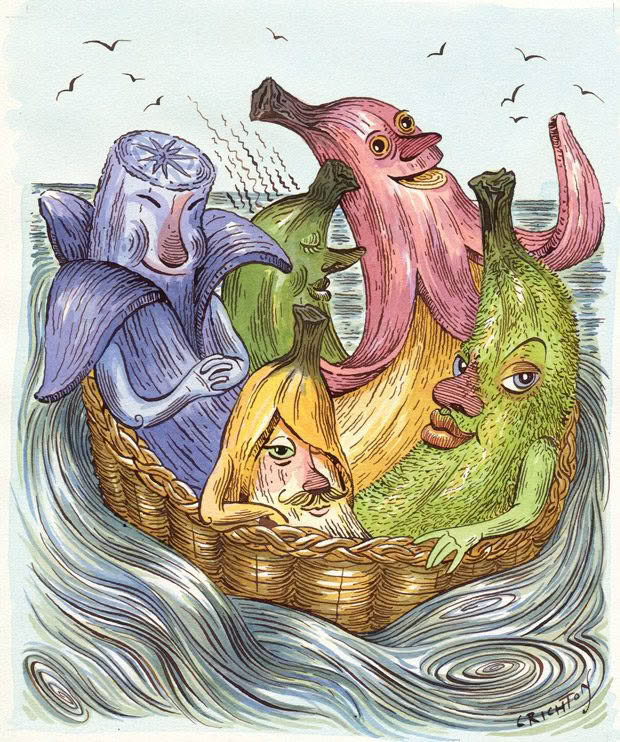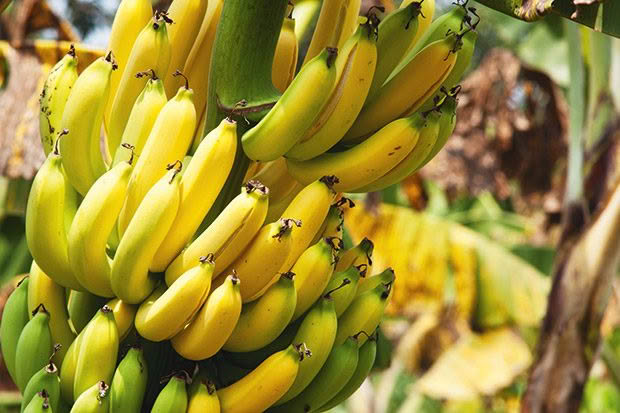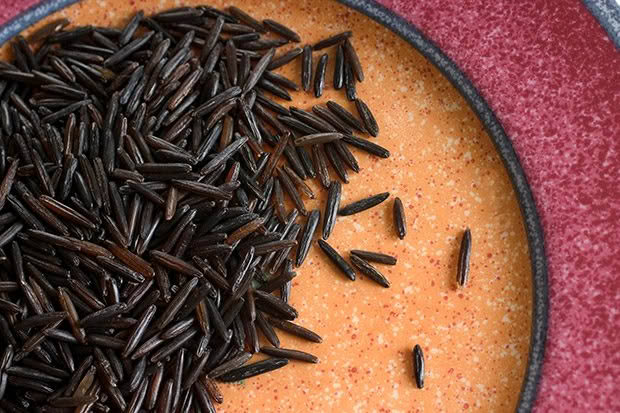Why we need odd crops to save our food

Genetically diverse crops, though inefficient economically, are like an insurance policy when environmental changes or disease strikes.
Words: Dr Roderick Mulgan Illustration: Anna Crichton
Botanists know morethan a thousand banana species, and you and I only eat one: the cavendish. Named after William Cavendish, the seventh Duke of Devonshire, whose greenhouse supplied the first specimen, it is a reliable cropper that ripens off the tree so it can be shipped green, which is vital for commerce at scale.
Everyone considers it the best banana for commercial crops; therefore, everyone commercially grows it. Cavendish palms propagate by suckers, not seeds, so growing genetically identical trees is easy. Banana plantations the world over are genetic mirror images. It is super-efficient. And dangerous.
Genetic diversity is inefficient economically, but it is the ultimate bulwark against challenges, such as environmental change and infection. Stockbrokers will tell you that holding a single share is a make-or-break gamble; long-term wealth means holding a basket of shares. Diversity is insurance.
We all know from recent experience that people respond differently to the same virus. If all humans were clones of one of the more susceptible types, we would be staring down the barrel of extinction. But pandemics are not just for people. If the cavendish fell prey to a banana disease, we would lose the entire international trade. Without diversity, there would be no replacement trees to propagate in place of the fallen ones.
This is why no natural monocultures exist; plants and pathogens that evolve together in the wild constantly diverge, so they stay in balance, and no disease is devastating.1 The intervening hand of humans changes everything.
It has already happened once. Until the 1950s, all the world’s commercial bananas were a species called gros michel. Then a fungus called panama disease hit and wiped them out. The cavendish emerged from the ashes after a frantic search for obscure specimens with panama resistance, and it has enjoyed world fame since. Hopefully, nothing new will come along, particularly as we did not take the lesson about monoculture on board.
Actually, it already has. A new panama strain emerged in the 1990s, infecting the cavendish. It was initially contained in Asia but got beyond it in 2013. In 2019, the first cases were spotted in South America, where the industry is huge. Even worse, it has arrived in Africa, where bananas in some parts are a pillar of the national diet, as potatoes are for us.

Once again, the call has gone out for new varieties with resistance. Genetic modification has thrown up solutions, but regulation and consumer suspicion of the technology remain entrenched. What remains to be seen is what will happen to the monoculture approach if the crisis gets fixed. There are many edible bananas, including red ones, fragrant ones, fuzzy ones, and blue ones that taste like ice cream. Diversity at the supermarket would be a boon to the consumer, not just a commercial insurance policy. The issue is whether the corporate banana world is up for it.
I do not lay this out because I fear losing a handy snack on the run or hope to try a blue variety one day. I lay this out because the same thing is happening everywhere we look.
Time was when experts anticipated the world would run out of food. Starvation would be common — and a brutal check on the number of humans who could be sustained. Then, in the 1950s, the green revolution happened. Fossil-fuel fertilizer and selectively bred plants transformed farms across the planet. It averted catastrophe but set up the world to depend on the new agriculture, a large part of which was to focus exclusively on the best options.
Wheat, for instance, goes back to the very beginning of the modern world, when humans first started staying in one place and growing things. It is one of the world’s most significant sources of calories, and more than half a million varieties reside in seed banks.
As recently as a hundred years ago, strains of wheat were not just randomly diverse but adapted to the district where they had been planted every spring for millennia. Since globalization, the commercial winners have been determined by yield and uniformity of height (which means ease of mechanical threshing), and only the tiniest number makes the grade.
Wheat also has fungal enemies. Fusarium head blight does better where wheat has a specific piece of DNA, like a weakness in computer code. This piece of DNA goes back to the origin of modern selective breeding, and most wheat now has it. Likewise, wheat blast, which crossed over from infecting rice when modern wheat lost its traditional resistance. Wheat blast has devastated crops in South America, and an outbreak in Bangladesh in 2016 was met with government orders to burn fields.
Much of the planet depends on rice. Wild rice is red and was bred to be white because white is more palatable, like white bread. Traditional red strains still exist, as do varieties that can grow in salty water, resist drought or be totally submerged for weeks. It is not hard to see how useful these traits could be in the world of tomorrow, but in just two or three generations, they have become fringe crops preserved by enthusiasts or lost.

Pigs used to come in numerous sizes and colours and were generally leaner than modern ones as they were foragers. They have always been useful to humans for eating waste rather than grass, and they were a natural fit for the first wave of food industrialization in the 19th century. Pigs ate the waste whey from cheese factories when railways started taking fresh milk long distances, and cheese factories became a thing. They foraged windfalls when large orchards were planted for commercial cider.
As people decamped into cities, pigs went with them to live in backyards and feed on kitchen scraps while ruminants were left in the fields. Making them uniform and maximally productive made sense the same way it would for plants a century later. The winner was the imaginatively named large white.3 Long, pink and meaty, the large white was first registered in 1868 and now dominates pig farms across the planet. Some people today probably don’t even know pigs can be black, red, spotted or hairy.
Chicken was a rare commodity for the dinner table before the 1940s. Chickens were mainly useful for eggs and grown in small operations in numerous different iterations, many of which arose as adaptations to a specific place. Today, most meat chickens are Frankenstein creations that grow too big to walk within weeks and are one of two types, the cobb 500 or the ross 308. Their meat is about the cheapest animal protein you can buy. A single breed of black and white cow from the Netherlands called holstein is now the dominant milking cow in the world.
The common denominator is free-market economics. A free market means producers must constantly look for the cheapest and most effective option. It was entirely predictable that a mature system of globally connected agriculture would settle on the best of the best and leave the rest for hobbyists and academics.
Lest I be misunderstood, I like free markets. They drive prosperity and alleviate poverty. But they are far from a complete recipe for a sensible existence. What is cheap and plentiful today is not necessarily secure for the long term. Even though diversity among producers might only add cents to the final product, markets do not have convenient mechanisms for conveying to the consumer how important that is. A race to the bottom is the universal norm.
Economists use the phrase “ceteris paribus” when analyzing efficiency; it means all other things being equal or nothing changing. Pink pigs, Frankenstein chickens and identical bananas are efficient ceteris paribus. How long that will continue is a question of pressing importance.
Love this story? Subscribe now!
 This article first appeared in NZ Life & Leisure Magazine.
This article first appeared in NZ Life & Leisure Magazine.
